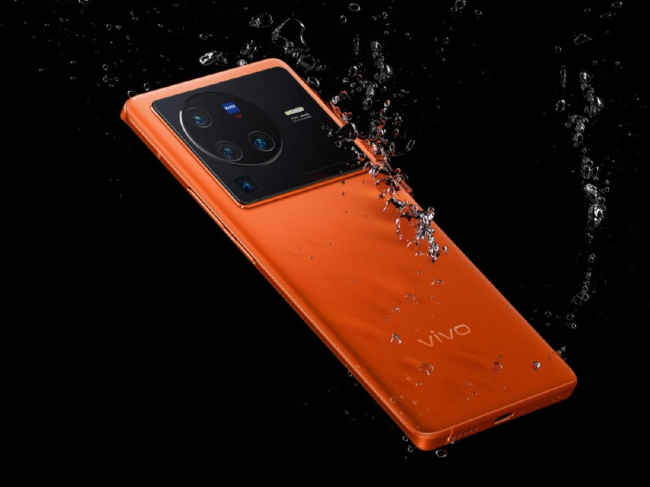Vivo has announced the Vivo X80 series in China and this time around there are only two phones called the Vivo X80 and the Vivo X80 Pro. The Pro model gets the privilege of both Qualcomm Snapdragon 8 Gen 1 and MediaTek Dimensity 9000 chipsets. Meanwhile, the regular Vivo X80 sticks to just the MediaTek Dimensity 9000 silicon. The Vivo X80 Pro also enjoys a variable refresh rate of up to 120Hz thanks to the LTPO2 panel. The standard X80 can hit 120Hz but it is not adaptive in nature. The main 50MP camera on the Vivo X80 is a Sony IMX866 sensor whereas the Pro variant gets a Samsung GNV sensor. The Pro-tag also gets you a slightly bigger battery with 50W wireless fast charging and 10W wireless reverse charging besides the 80W fast wired charging present on both models.
Here’s a tabular representation of their differences for a better understanding —
Vivo X80 vs Vivo X80 Pro Specs and Features Model Vivo X80 Vivo X80 Pro Display 6.78-inch, E5 AMOLED, FHD+, 120Hz, MEMC 6.78-inch, E5 AMOLED LTPO2, QHD+, 1-120Hz, MEMC Front Camera 32MP within a central punch hole cutout 32MP within a central punch hole cutout Rear Cameras 50MP (Sony IMX866, OIS)+ 12MP ultrawide+ 12MP (2x, 20x super zoom), Zeiss optics, Zeiss T* coating, V1+ ISP 50MP (Samsung GNV, OIS)+ 48MP ultrawide+ 12MP (2x, gimbal)+ 8MP (periscope, 5x, 60x super zoom, OIS), Zeiss optics, Zeiss T* coating, V1+ ISP Software Android 12 with OriginOS Ocen (Funtouch OS 12 for global markets) Android 12 with OriginOS Ocean (Funtouch OS 12 for global markets) Processor MediaTek Dimensity 9000 Qualcomm Snapdragon 8 Gen 1/ MediaTek Dimensity 9000 Memory LPDDR5 + UFS 3.1 LPDDR5 + UFS 3.1 Battery 4500mAh + 80W wired charging 4700mAh + 80W wired charging, 50W wireless charging and 10W reverse wireless charging Misc. USB-C 3.2 Gen 1, stereo speakers, 5G, WiFi 6, Bluetooth 5.3, dual-band GPS, under-display fingerprint scanner IP68 dust and water resistance, USB-C 3.2 Gen 1, HiFi amp for Type-C headphones, stereo speakers, 5G, WiFi 6, Bluetooth 5.2 (5.3 in Dimensity model), dual-band GPS, under-display ultrasonic fingerprint scannerSo, the key differences between the two Vivo phones are in the display, camera setup, IP68 rating, the battery plus charging department, and more.

Rest, the design of both the Vivo X80 and the X80 Pro looks cut from the same cloth. You can purchase them in Black, Blue, and Orange colors.
Vivo X80, X80 Pro Price and Availability
In China, the Vivo X80 lineup is going on sale from April 29. Vivo X80 starts at CNY 3,699 (~₹43,200) and the Vivo X80 Pro has launched at a starting price of CNY 5,499 (~₹64,300).
Vivo X80 pricing is as below:
8+128GB: CNY 3,699 (~₹43,200) 8+256GB: CNY 3,999 (~₹46,700) 12+256GB: CNY 4,399 (~₹51,400) 12+512GB: CNY 4,899 (~₹57,200)Vivo X80 Pro pricing is as follows:
8+256GB (Snapdragon 8 Gen 1): CNY 5,499 (~₹64,250) 12+256GB (Snapdragon 8 Gen 1): CNY 5,999 (~₹70,000) 12+512GB (Snapdragon 8 Gen 1): CNY 6,699 (~₹78,000) 12+256GB (Dimensity 9000): CNY 5,999 (~₹70,000) 12+512GB (Dimensity 9000): CNY 6,699 (~₹78,000)As for other news, reviews, feature stories, buying guides and everything else tech-related, keep reading Digit.in.
from Mobile Phones News https://ift.tt/B84gG5M

Comments
Post a Comment